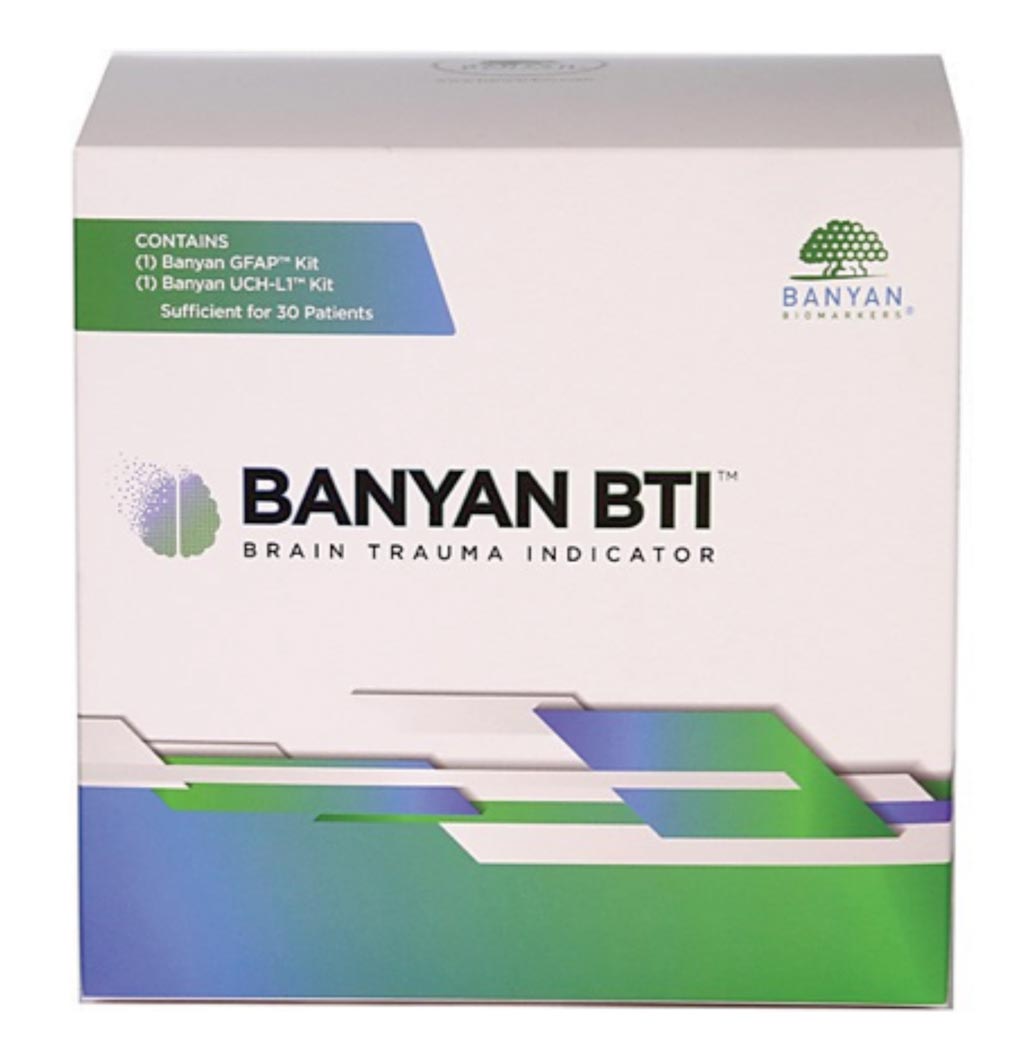Blood Biomarker Indicates Extent of Traumatic Brain Injury
By LabMedica International staff writers
Posted on 10 Aug 2018
An estimated 54 million to 60 million people worldwide sustain a traumatic brain injury (TBI) annually. In the USA, more than 2.5 million people are diagnosed with TBI each year and most of those are from concussions.Posted on 10 Aug 2018
Computer tomography scans of the head are the common diagnostic choices for such cases, contributing to the nearly 20 million head CT scans conducted annually in the USA that cost more than USD 76 billion each year. The widespread use of head CT scans has been questioned because of the potential adverse effects of radiation exposure, unnecessary emergency department resource use and the cost of the scans.

Image: The Brain Trauma Indicator kit that measures the biomarkers, Ubiquitin Carboxy-terminal Hydrolase-L1 (UCH-L1) and Glial Fibrillary Acidic Protein (GFAP) (Photo courtesy of Banyan Biomarkers).
A large team of scientists collaborating with those at Wayne State University School of Medicine (Detroit, MI, USA) validated the use of a diagnostic blood test to rule out the need for a head CT scan in patients 18 years and older with suspected TBI. Patients from multiple centers were eligible if they had undergone head CT as part of standard emergency care and blood collection within 12 hours of injury.
The team used the Banyan Brain Trauma Indicator (Banyan BTI) (Banyan Biomarkers Inc, San Diego, CA, USA) which measures the biomarkers, Ubiquitin Carboxy-terminal Hydrolase-L1 (UCH-L1) and Glial Fibrillary Acidic Protein (GFAP) that are detected in the blood soon after a brain injury. UCH-L1 and GFAP were measured in serum and analyzed using prespecified cutoff values of 327 pg/mL and 22 pg/mL, respectively. UCH-L1 and GFAP assay results were combined into a single test result that was compared with head CT results.
The investigators found that 1,288 (66%) patients had a positive UCH-L1 and GFAP test result and 671 (34%) had a negative test result. For detection of intracranial injury, the test had a sensitivity of 0·976 (95% CI 0·931–0·995) and a negative predictive value (NPV) of 0·996 (0·987–0·999). In three (<1%) of 1,959 patients, the CT scan was positive when the test was negative. The authors interpreted this to mean that their results show the high sensitivity and NPV of the UCH-L1 and GFAP test. This supports its potential clinical role for ruling out the need for a CT scan among patients with TBI presenting at emergency departments in whom a head CT is felt to be clinically indicated.
Robert Welch, MD, MS, an Endowed Professor of Emergency Medicine, and senior co-author of the study, said. “This study is exciting for a few reasons. This is the largest study of any biomarker for TBI that has been performed in the United States and provides robustness of the findings compared to many earlier smaller studies. Our results were the basis for the first FDA approved blood biomarker panel that will aid in the diagnosis and care of patients with mild TBI. To a certain degree, this has been a holy grail for quite some time.” The study was published on July 24, 2018, in the journal The Lancet Neurology.
Related Links:
Wayne State University School of Medicine
Banyan Biomarkers













